Aquatic Invertebrates
Media
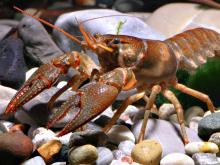
Species Types
Scientific Name
Faxonius quadruncus (formerly Orconectes quadruncus)
Description
The St. Francis River crayfish is rather small and dark brown, with blackish blotches or specks over the upper surfaces of the pincers, carapace, and abdomen. It is limited to the St. Francis River and its tributaries.
Media

Species Types
Scientific Name
Cambarellus shufeldtii
Description
Shufeldt’s dwarf crayfish is small, reddish brown to gray, with a paired series of dark, wavy stripes or dashes along the dorsal surface. In Missouri, it occurs in our southeastern lowlands and north along the Mississippi River floodplain.
Media
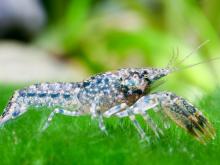
Species Types
Scientific Name
Cambarellus puer
Description
The Cajun dwarf crayfish is small, reddish brown to gray, with a paired series of dark, wavy stripes or dashes along the dorsal surface. In Missouri, it occurs in our southeastern lowlands.
Media
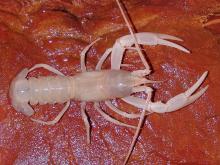
Species Types
Scientific Name
Orconectes stygocaneyi
Description
One of three species of cave crayfish in Missouri, the Caney Mountain cave crayfish is known from only one location. Like many other cave invertebrates, this species is whitish and is blind.
Media
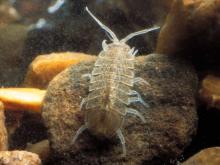
Species Types
Scientific Name
Freshwater members of the crustacean order Isopoda
Description
Everyone knows about terrestrial sowbugs and pillbugs, but many isopod species are aquatic. Missouri has several isopods that live in streams, ponds, rivers, and caves.
Media

Species Types
Scientific Name
Bivalve molluscs in order Unionoida
Description
Secretive and seldom seen, freshwater mussels are extraordinarily diverse in Missouri. We have nearly 70 species within our borders. Many are declining, and several are endangered.
Media

Species Types
Scientific Name
Over 20 Missouri species in former subclass Prosobranchia
Description
Gilled snails are one of two main groups of aquatic snails in Missouri (the other group is the "lunged" snails). Gilled snails, or prosobranchs, breathe with gills and possess a hard trapdoor-like operculum. They are most common in the Ozarks.
Media
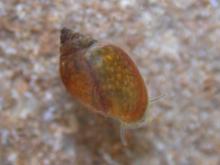
Species Types
Scientific Name
Over 30 Missouri species in former subclass Pulmonata
Description
Pulmonate, or lunged snails breathe via a lunglike pulmonary cavity, and they lack the hard trapdoor-like operculum found in gilled snails. Except for in the Ozarks, pulmonate snails predominate in most of the aquatic regions in our state.
Media

Species Types
Scientific Name
Gyraulus, Helisoma, Menetus, Micromenetus, Planorbula spp.
Description
Ramshorn snails are easy to identify at a glance, because the shell is a flat, disklike coil. Like other pulmonate aquatic snails, they lack the hard horny “trapdoor” possessed by other types of aquatic snails.
Media
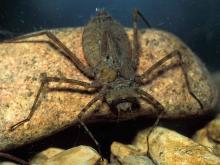
Species Types
Scientific Name
Species in the suborder Anisoptera
Description
Dragonfly larvae are aquatic insects with large eyes, six legs, and an oval or rounded segmented abdomen. The lower jaws are scooplike and cover much of the lower part of the head.
See Also
About Aquatic Invertebrates in Missouri
Missouri's streams, lakes, and other aquatic habitats hold thousands of kinds of invertebrates — worms, freshwater mussels, snails, crayfish, insects, and other animals without backbones. These creatures are vital links in the aquatic food chain, and their presence and numbers tell us a lot about water quality.





















